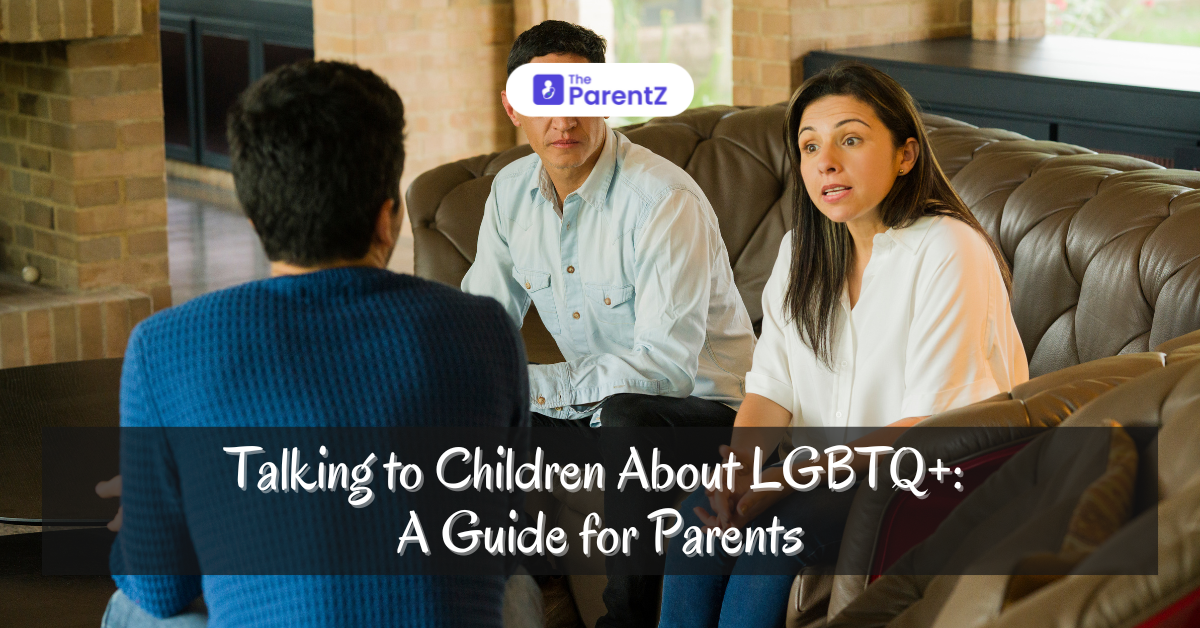The LGBTQ+ community has undeniably become a part of mainstream conversation. It’s a topic that sparks curiosity, questions, and sometimes, discomfort. For parents, navigating this terrain can feel overwhelming. But remember, your child’s questions are a sign of their growing understanding of the world, and your role is to guide them with openness and respect.
Understanding the Basics
Before engaging in a conversation with your child, it’s essential to have a basic understanding of LGBTQ+ terms.
- Sexual orientation is who someone is drawn to romantically and sexually. This can be to people of the same sex (gay or lesbian), the opposite sex (heterosexual), or both (bisexual).
- Gender identity is a person’s inner sense of being a man, woman, or something else. It might not align with the sex they were assigned at birth.
- Transgender is a term used for individuals whose gender identity varies from the sex they were told to have at birth.
It’s okay if you don’t know everything. You can learn together.
Creating an Open Dialogue
- Start early: Open conversations about diversity and inclusivity should start early. This builds a foundation of respect for all people.
- Listen actively: Let your child lead the conversation. Show genuine interest in their questions and thoughts.
- Use age-appropriate language: Tailor your explanations to your child’s age and understanding.
- Be honest and straightforward: Answer their questions honestly, but avoid overwhelming them with too much information.
- Validate their feelings: Let them know that their feelings are reasonable, whether they’re curious, confused, or unsure.
Beyond the Labels
It’s crucial to emphasize that people are more than just labels. Focus on the root values of respect, kindness, and acceptance. Here are some points to consider:
- Love is love: Explain that love is a powerful emotion that can be shared between people of all genders and sexual orientations.
- Diversity is normal: Help your child understand that people come in all shapes, sizes, and identities.
- Challenge stereotypes: Discuss harmful stereotypes and misconceptions about LGBTQ+ people.
- Emphasize respect: Teach your child the importance of respecting everyone, regardless of their differences.
Addressing Potential Challenges
You might encounter questions or concerns about topics like same-sex marriage or transgender rights. It’s important to approach these discussions with sensitivity and balance.
- Focus on family: Remind your child that families come in all forms, and what matters most is love and support.
- Avoid judgment: Refrain from expressing personal opinions or biases.
- Encourage empathy: Help your child understand the challenges faced by LGBTQ+ individuals.
The Role of Schools and Media
Schools and media can play a huge role in shaping your child’s understanding of LGBTQ+ issues.
- Communicate with teachers: Discuss your approach to LGBTQ+ education with your child’s teachers.
- Be mindful of media consumption: Watch TV shows and movies with your child and use them as opportunities for discussion.
- Encourage critical thinking: Help your child develop the ability to evaluate information from different sources.
Remember, raising open-minded and compassionate children takes time and effort. By creating a secure and supportive environment, you can help your child develop a positive and inclusive worldview.
Additional Resources
Many resources are available to help you navigate this conversation. Consider seeking support from LGBTQ+ organizations, books, or online communities.
Conclusion
Ultimately, the goal is to raise children who are respectful, empathetic, and accepting of all people. Encouraging open communication and education can help your child build a strong foundation for a lifetime of understanding and inclusivity.








Be the first one to comment on this story.